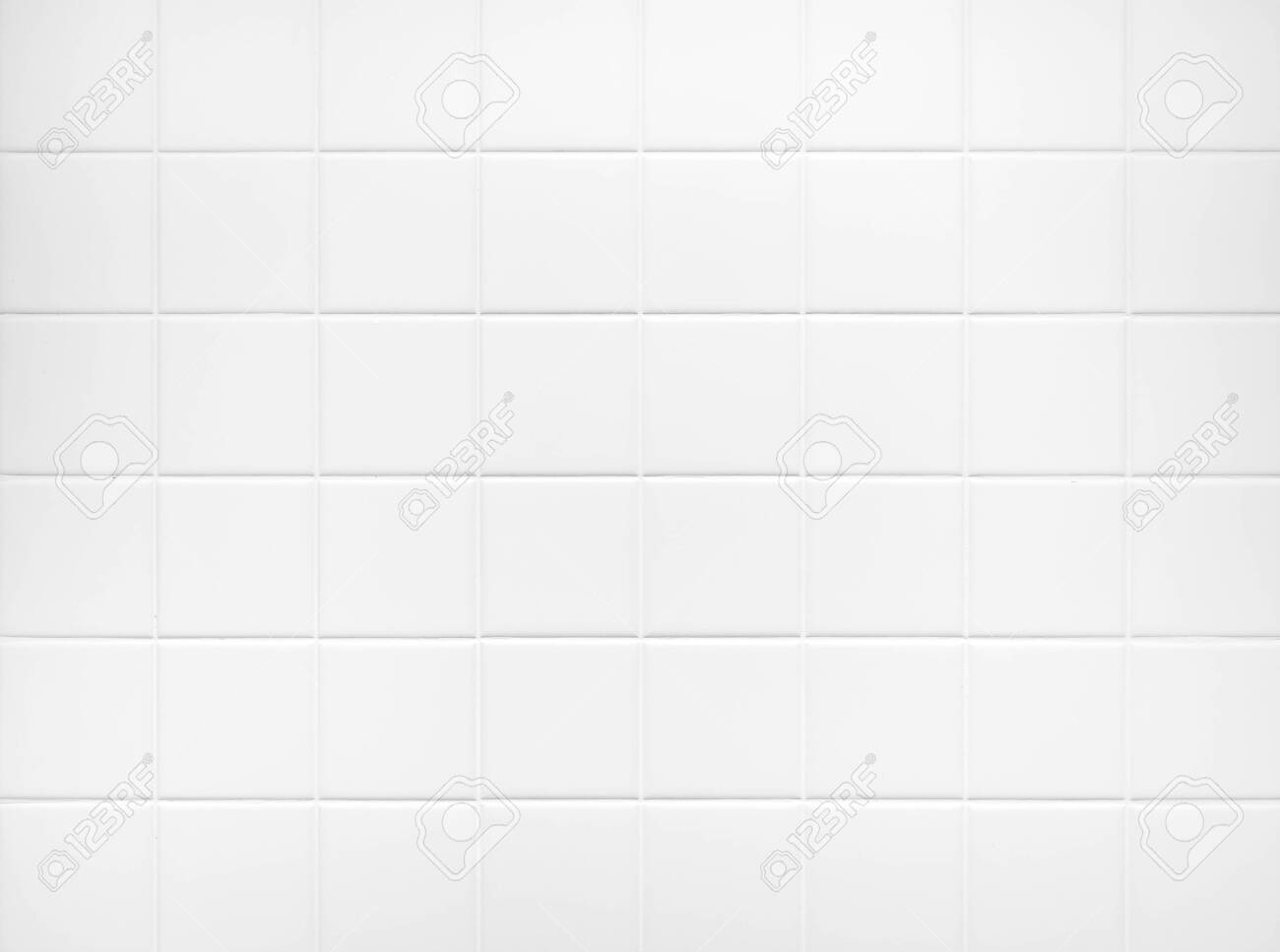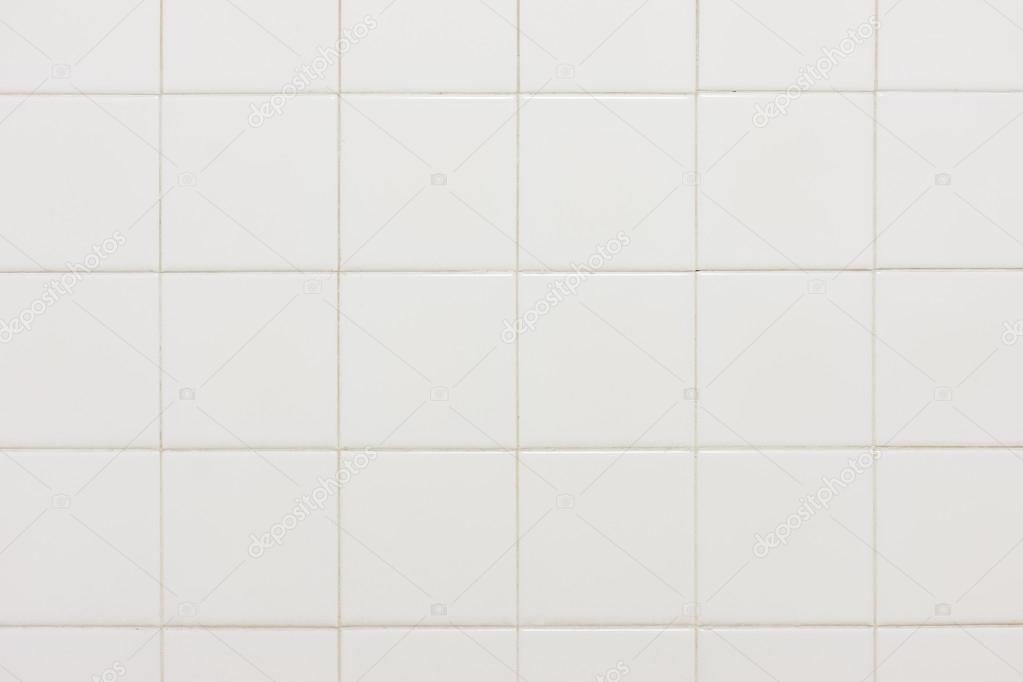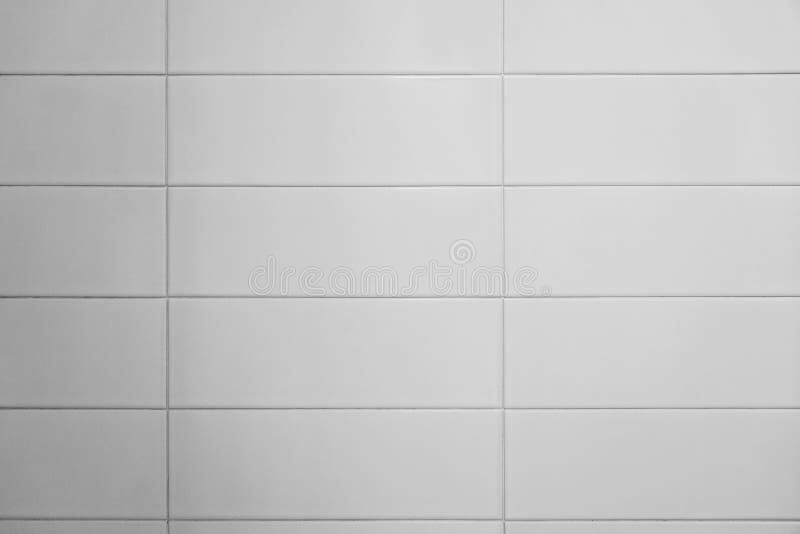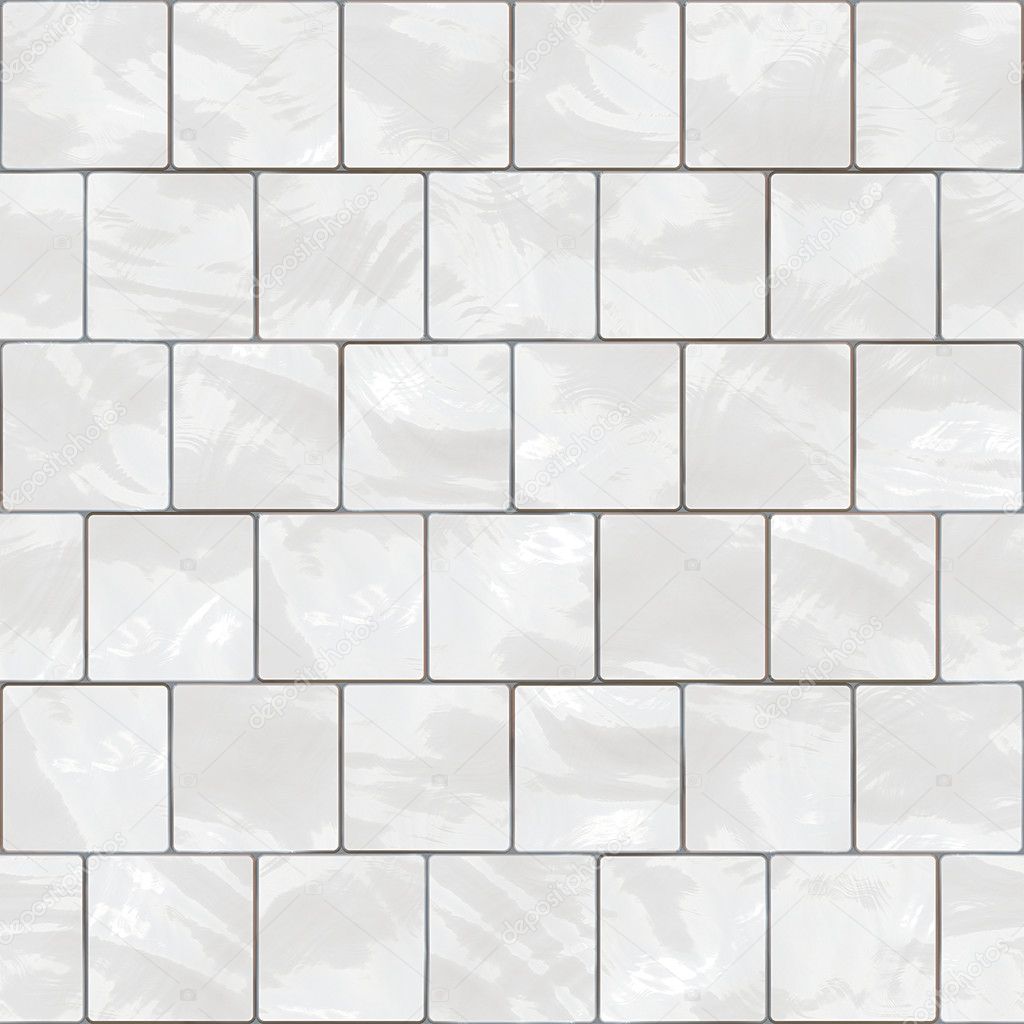Classic Smooth White Tiles: A Timeless Choice
White tiles have long been a staple in bathroom design, thanks to their clean, versatile, and timeless appeal. Among the various styles available, classic smooth white tiles stand out for their simplicity and elegance. These tiles can transform any bathroom into a bright, welcoming space while providing a backdrop that complements various design elements. Let’s discuss the enduring charm of classic smooth white tiles and why they remain a popular choice for homeowners and designers alike.
- Elegant Simplicity: Classic smooth white tiles offer an understated elegance that can elevate any bathroom decor. Their clean, unembellished surface creates a minimalist look that never goes out of style. This simplicity allows them to blend seamlessly with a variety of design themes, from traditional to modern. Whether you’re aiming for a vintage-inspired bathroom or a sleek contemporary space, smooth white tiles provide the perfect canvas.
- Versatility in Design: One of the greatest advantages of classic smooth white tiles is their versatility. They can be used in numerous ways to create different effects. For instance, arranging them in a subway pattern gives a classic, timeless look, while laying them in a herringbone pattern adds a touch of sophistication. Additionally, these tiles pair well with other materials and colors, making them ideal for mixed-material designs.
- Enhancing Light and Space: Smooth white tiles are excellent at reflecting light, which can make a bathroom appear larger and brighter. This quality is particularly beneficial in smaller bathrooms or spaces with limited natural light. By using white tiles, you can create an open, airy atmosphere that feels fresh and inviting. The reflective surface of smooth tiles also adds a subtle shine, enhancing the overall brightness of the room.
- Easy to Clean and Maintain: Another key advantage of smooth white tiles is their ease of maintenance. The smooth surface does not trap dirt and grime, making them easy to clean with simple household cleaners. This low-maintenance quality is especially important in bathrooms, where hygiene is a top priority. Regular cleaning will keep your white tiles looking pristine and ensure they maintain their appeal for years to come.
- Cost-Effective Choice: Classic smooth white tiles are often more affordable than their textured or patterned counterparts. This cost-effectiveness makes them an attractive option for budget-conscious homeowners looking to achieve a stylish bathroom without breaking the bank. Despite their lower cost, these tiles do not compromise on quality or aesthetic appeal, offering a budget-friendly way to create a beautiful bathroom.
- Enduring Popularity: The enduring popularity of smooth white tiles is a testament to their timeless appeal. They have been used in bathrooms for decades and continue to be a favorite choice among designers and homeowners. This lasting popularity ensures that your bathroom will not look dated, even as design trends evolve. By choosing classic smooth white tiles, you’re investing in a look that will remain stylish and relevant for years to come.
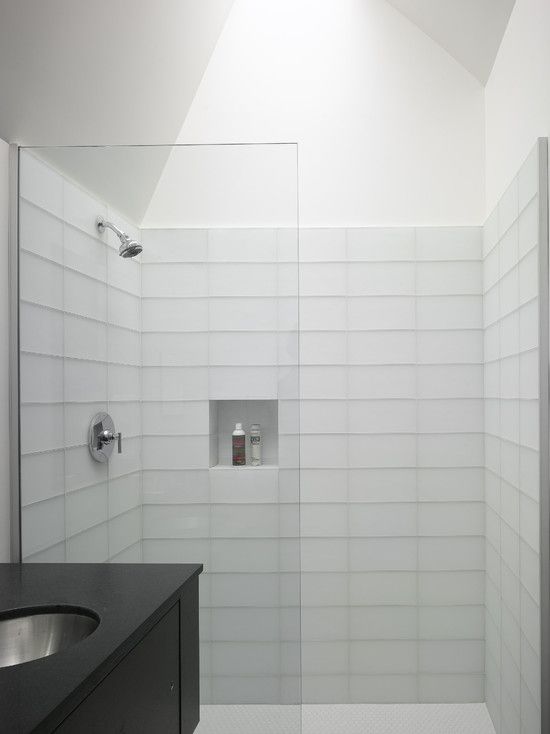
Matte vs. Glossy: Choosing the Right Finish
When it comes to white bathroom tiles, choosing between a matte or glossy finish can significantly impact the overall look and feel of your space. Both finishes have their unique benefits and aesthetic qualities, making the decision a matter of personal preference and practical considerations. Let’s see the characteristics of matte and glossy white tiles to help you make an informed choice for your bathroom.
Understanding Matte Finish
Matte white tiles have a non-reflective surface that offers a subtle and sophisticated look. This finish is characterized by its soft, velvety texture that absorbs light rather than reflecting it. Matte tiles are perfect for creating a calm, serene atmosphere in the bathroom. They work well in contemporary and rustic designs, providing a modern yet understated elegance.
Advantages of Matte Tiles
One of the main advantages of matte tiles is their ability to conceal smudges, water spots, and fingerprints. This quality makes them an excellent choice for busy bathrooms, as they require less frequent cleaning to maintain their appearance. Additionally, the non-slip surface of matte tiles provides added safety, making them ideal for flooring in wet areas such as showers and around bathtubs.
The Allure of Glossy Finish
Glossy white tiles, on the other hand, have a shiny, reflective surface that can brighten up a bathroom by reflecting light. This finish creates a polished, high-end look that adds a sense of luxury to any space. Glossy tiles are often used in smaller bathrooms to enhance light and make the room feel more spacious. They are also popular in modern and classic designs for their sleek, glamorous appeal.
Benefits of Glossy Tiles
The reflective nature of glossy tiles makes them easy to clean, as dirt and grime are more visible on the surface and can be quickly wiped away. This quality is particularly beneficial for wall tiles, where water splashes and soap scum can be more noticeable. Additionally, glossy tiles can enhance the visual impact of decorative features such as mosaic inserts or accent borders, adding a touch of elegance to the bathroom.
Comparing Durability and Maintenance
Both matte and glossy tiles are durable and suitable for bathroom use, but their maintenance requirements differ. Matte tiles, with their non-reflective surface, hide imperfections better and require less frequent cleaning. However, glossy tiles, while needing more regular cleaning to keep their shine, are less prone to staining and easier to wipe clean. Choosing between the two often comes down to how much time you’re willing to spend on maintenance.
Making the Right Choice
Ultimately, the choice between matte and glossy white tiles depends on your personal style preferences and practical needs. If you prefer a contemporary, low-maintenance look, matte tiles may be the way to go. If you want to create a bright, luxurious atmosphere, glossy tiles could be the better option. Consider the overall design of your bathroom, the amount of natural light, and your cleaning routine when making your decision. Both finishes offer unique benefits that can enhance the beauty and functionality of your bathroom.
Textured White Tiles for a Spa-Like Feel
Transforming your bathroom into a tranquil, spa-like retreat is a popular design trend, and textured white tiles are a perfect way to achieve this look. These tiles add depth and interest to your space while maintaining a clean and serene aesthetic. Here are the benefits of using textured white tiles and how they can help create a calming, spa-inspired bathroom.
Creating a Sense of Tranquility
Textured white tiles can instantly create a sense of tranquility in your bathroom. The tactile quality of these tiles adds a layer of depth that smooth tiles cannot achieve. This textural element can evoke the peaceful ambiance of a spa, making your bathroom a place of relaxation and rejuvenation. Whether it’s a gentle ripple, a natural stone look, or a geometric pattern, textured tiles bring a soothing, tactile experience to your space.
Enhancing Visual Interest
The variety of textures available in white tiles allows you to play with different looks and feels. From subtle, barely-there textures to more pronounced patterns, textured tiles can add visual interest and break up the monotony of plain surfaces. This added dimension can make your bathroom feel more dynamic and engaging, drawing the eye and creating focal points within the room.
Natural Stone Textures
One popular option for creating a spa-like feel is using white tiles that mimic the texture of natural stone. These tiles often have a slightly rough, uneven surface that adds an organic, earthy quality to your bathroom. They can evoke the look and feel of materials like marble, limestone, or travertine, providing a luxurious yet natural aesthetic that is perfect for a spa-inspired design.
Subtle Patterns and Reliefs
Textured tiles with subtle patterns and reliefs can also contribute to a spa-like atmosphere. Tiles with gentle waves, floral motifs, or abstract designs can add a touch of elegance and sophistication to your bathroom. These patterns can be used to create feature walls or accent areas, providing a visual break from the smooth surfaces and adding a sense of movement and flow to the space.
Combining Textures for Effect
Mixing different textures within the same color palette can create a harmonious yet intriguing design. For example, pairing smooth white tiles with textured ones can highlight specific areas, such as the shower or the backsplash. This combination can enhance the overall aesthetic of your bathroom, making it feel more thoughtfully designed and cohesive. The interplay of textures can also add a layer of complexity that enhances the spa-like feel.
Practical Considerations
While textured tiles add beauty and interest to your bathroom, it’s important to consider their practical aspects. Textured surfaces can be slightly more challenging to clean than smooth ones, as dirt and grime can get trapped in the crevices. However, with regular maintenance and proper cleaning techniques, you can keep your textured tiles looking pristine. Additionally, ensure that the tiles you choose are suitable for wet areas, especially if you’re using them on the floor, to prevent slipping.
Combining White Tiles with Other Materials
White tiles are incredibly versatile and can be paired with a variety of other materials to create stunning bathroom designs. Combining white tiles with different textures, colors, and materials can add depth and interest to your space, making it feel more dynamic and thoughtfully designed. Here are several ways to combine white tiles with other materials to achieve a unique and stylish bathroom.
Wood and White Tiles
One of the most popular combinations is pairing white tiles with wood. The natural warmth and texture of wood contrast beautifully with the clean, cool look of white tiles. This combination can create a balanced and inviting bathroom design. Whether it’s a wooden vanity, shelving, or flooring, the addition of wood can add a rustic, earthy element that complements the crispness of white tiles.
Metal Accents
Incorporating metal accents into your bathroom design can add a touch of sophistication and modernity. Metals like brass, copper, and stainless steel can be used in fixtures, fittings, and accessories to enhance the overall aesthetic. For example, a white tiled wall with a brass faucet and showerhead creates a luxurious and contemporary look. The reflective quality of metal also adds a bit of shine and glamor to the space.
Glass and Mirrors
Glass and mirrors are excellent materials to pair with white tiles, as they can enhance the sense of light and space in your bathroom. Glass shower enclosures, shelves, and decorative accents can create a sleek and modern look. Mirrors, on the other hand, can make the room feel larger and brighter. Consider using mirrored tiles as accents or incorporating large mirrors to maximize the reflective qualities of the space.
Natural Stone Elements
Adding natural stone elements to your bathroom can bring a touch of luxury and elegance. Stones like marble, granite, and quartz pair beautifully with white tiles, creating a high-end, sophisticated look. You can use stone for countertops, backsplashes, or even flooring. The natural veining and texture of stone add a unique and organic element that enhances the overall design.
Concrete and Industrial Elements
For a more modern and edgy look, consider combining white tiles with concrete or industrial elements. Concrete sinks, countertops, and flooring can create a sleek, minimalist aesthetic that contrasts nicely with the purity of white tiles. Industrial-style fixtures, such as black metal frames or exposed pipes, can further enhance this look, adding a touch of urban chic to your bathroom.
Colorful Accents
While white tiles provide a neutral base, adding colorful accents can bring vibrancy and personality to your bathroom. You can introduce color through accessories, textiles, or even small areas of colored tiles. For example, a white tiled bathroom with a bright blue backsplash or colorful patterned floor tiles can create a lively and energetic atmosphere. This approach allows you to experiment with color without overwhelming the space.
Maintenance Tips for Textured White Bathroom Tiles
Textured white bathroom tiles add depth and visual interest to your space, but they also require specific care to maintain their beauty and functionality. Proper maintenance ensures that your tiles remain clean and pristine, enhancing the overall aesthetic of your bathroom. Below we provide essential tips for maintaining textured white bathroom tiles to keep them looking their best.
Regular Cleaning Routine
Establishing a regular cleaning routine is crucial for maintaining textured tiles. The textured surface can trap dirt, grime, and soap residue, so it’s essential to clean them frequently. Use a soft-bristled brush or a sponge with mild, non-abrasive cleaners to gently scrub the tiles. Avoid harsh chemicals that can damage the tile surface or grout. Regular cleaning prevents buildup and keeps your tiles looking fresh and clean.
Tackling Stubborn Stains
For stubborn stains or mildew, use a mixture of baking soda and water to create a paste. Apply the paste to the stained area and let it sit for a few minutes before scrubbing with a brush. This natural cleaning solution is effective in removing stains without damaging the textured surface. For tougher stains, consider using a vinegar and water solution. Spray the solution onto the stain, let it sit for a while, and then scrub gently.
Maintaining Grout Lines
Grout lines can easily accumulate dirt and discoloration, especially in textured tile installations. To keep grout lines clean, use a grout cleaner or a mixture of baking soda and hydrogen peroxide. Apply the cleaner to the grout lines, let it sit for a few minutes, and then scrub with a grout brush. Regularly cleaning the grout prevents staining and keeps your bathroom looking pristine.
Preventing Mold and Mildew
Bathrooms are prone to mold and mildew due to the high humidity levels. To prevent mold and mildew growth on textured tiles, ensure proper ventilation in your bathroom. Use exhaust fans or open windows to reduce moisture buildup. After showering, wipe down the tiles and grout with a squeegee or a dry cloth to remove excess water. Keeping the bathroom dry helps prevent mold and mildew from taking hold.
Sealing Textured Tiles
Sealing your textured tiles and grout can provide an extra layer of protection against stains and moisture. Use a high-quality tile and grout sealer specifically designed for textured surfaces. Apply the sealer according to the manufacturer’s instructions, ensuring even coverage. Sealing the tiles not only protects them but also makes cleaning easier, as it prevents dirt and grime from penetrating the surface.
Repairing Damaged Tiles
Over time, textured tiles may become chipped or cracked. It’s important to address any damage promptly to prevent further deterioration. For minor chips or cracks, use a tile repair kit that matches the color and texture of your tiles. Follow the instructions carefully to ensure a seamless repair. If the damage is extensive, consider consulting a professional to replace the damaged tiles and restore the integrity of your bathroom design.
Seamless White Bathroom Wall Tiles
White Bathroom Tile Texture
Shiny seamless white tiles texture
White Color Polished Surface Wholesale Bath Tiles
Bathroom Tiles Texture Seamless Background. White Tile
Wall Tile at Lowes.com
White and gray tiles on bathroom wall. Tiled vector seamless
Related Posts:
- Bathroom Tile Decorating Ideas Pictures
- Hgtv Bathroom Tile Design Ideas
- Bathroom Tiles Black And White Ideas
- Bathroom Tile DIY Installation
- How To Clean Old Bathroom Tile Floor
- Standard Bathroom Tile Dimensions
- Bathroom Tile Repair Cost
- Vintage Blue Bathroom Tile
- Bathroom Tiles Kent
- Bathroom Tile And Grout Sealer

